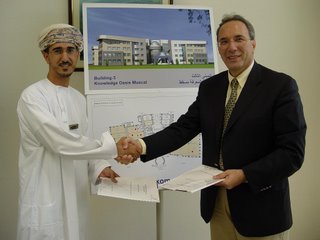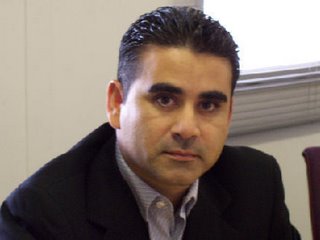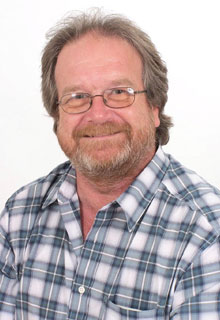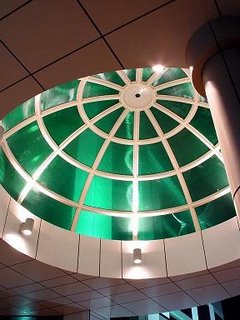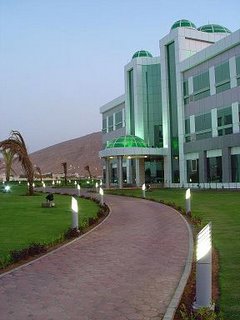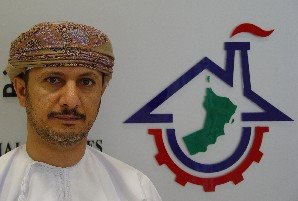The Knowledge Mine (TKM) – Ernst & Young Big Business Idea Competition 2006, the first national business plan competition of its kind in Oman, will be launched Sunday 18 June at Knowledge Oasis Muscat.
“The Big Business Idea Competition is a marvellous initiative and we’re searching for ‘would be’ entrepreneurs who want to turn their ideas into a successful business that everyone can benefit from. In simple terms, this is a competition that is designed to encourage Omani students, researchers and entrepreneurs to act on their talent, ideas and energy to produce tomorrow's leading businesses,” said Eng. Mohammed Al Ghassani, Executive Vice President, Public Establishment for Industrial Estates and organizer of the competition.
In partnership with The Knowledge Mine incubator program, the competition brings together seven of Oman’s leading organizations with the aim of generating awareness of innovation, entrepreneurship and the start-up culture. “Without the support and involvement of Ernst & Young; the Information Technology Authority; Ericsson; National Bank of Oman; NCR; Nawras; and Apex Publishing the competition could not have been organized. Indeed, these are organizations that have the vision to truly understand and appreciate the importance of this annual initiative and its long-term impact on the Sultanate’s economy,” said Al Ghassani.
Entries are welcome from Omani nationals and the organisers particularly encourage University staff, researchers, students and entrepreneurs to enter, but also welcome submissions from individuals and teams and new companies who have good, innovative ideas for a technology-driven business. “Ideas should be original or a significant improvement on an existing business. This year the competition has a top prize of RO5,000 for the winning business plan plus free office accommodation in The Knowledge Mine incubator program,” said Philip Stanton, Managing Partner, Ernst & Young. Full details on how to take part in the competition can be downloaded from www.kom.om/bbic
The competition seeks out the best new business ideas, as judged by a panel of industry experts that includes: Mohammed Salem and Rajeev Singh (Ernst & Young); Dr. Salim Al Ruzaiqi (ITA); Rob Clark (Ericsson); Hassan Shaban (NBO); Eyhab Al Hajj (Nawras); Habib Hanna (NCR); Dr. Ashraf Al Nabhani (The College of Banking & Financial Studies); Eng. Mohammed Al Ghassani (PEIE); Khalid Ansari (KPMG); Dave Pender (PEIE); Alan Rooke (OmanLine); Karim Rahemtulla (Infocomm); Dr. Graham Smith (Sohar Aluminium); Nick Pattison (Pattison Consulting); and a representative from Talal Abu Ghazaleh. Entrants have until 1:00pm on 2 September 2006 to submit their business plan at Knowledge Oasis Muscat. Semi-finalists will be announced in early September and the four best business plans will be invited to present at a Gala Dinner scheduled for 5 November at the Muscat Inter-Continental Hotel.
Those who submit a business plan will get high-level feedback on their idea and the chance to learn more about processes of business. “The competition is a highly-prestigious platform for successful new venture creation, access to networks, training and valuable contacts and it helps further understanding of the investment process and what constitutes a realistic marketable idea,” commented Al Ghassani. Advisers from Ernst & Young will run three pre-competition workshops (28 June, 2 and 9 July) at Knowledge Oasis Muscat – these are intended to help entrants sharpen up their business ideas to make them more viable. Commenting on Ernst & Young’s involvement in the Big Business Idea Competition, Stanton said: “As Oman’s economy continues to grow, Ernst & Young is delighted to play a role in furthering business development in the Sultanate.”
"It's a wonderful opportunity," said Hassan Shaban, Head, Corporate Communications, NBO. "I'd advise anyone who's interested in starting a business to enter the Big Business Idea Competition. In fact, this is a great opportunity for us to encourage the creative approach that underlies the innovative and entrepreneurial business spirit that’s sweeping the globe.”
“The Big Business Idea Competition is a marvellous initiative and we’re searching for ‘would be’ entrepreneurs who want to turn their ideas into a successful business that everyone can benefit from. In simple terms, this is a competition that is designed to encourage Omani students, researchers and entrepreneurs to act on their talent, ideas and energy to produce tomorrow's leading businesses,” said Eng. Mohammed Al Ghassani, Executive Vice President, Public Establishment for Industrial Estates and organizer of the competition.
In partnership with The Knowledge Mine incubator program, the competition brings together seven of Oman’s leading organizations with the aim of generating awareness of innovation, entrepreneurship and the start-up culture. “Without the support and involvement of Ernst & Young; the Information Technology Authority; Ericsson; National Bank of Oman; NCR; Nawras; and Apex Publishing the competition could not have been organized. Indeed, these are organizations that have the vision to truly understand and appreciate the importance of this annual initiative and its long-term impact on the Sultanate’s economy,” said Al Ghassani.
Entries are welcome from Omani nationals and the organisers particularly encourage University staff, researchers, students and entrepreneurs to enter, but also welcome submissions from individuals and teams and new companies who have good, innovative ideas for a technology-driven business. “Ideas should be original or a significant improvement on an existing business. This year the competition has a top prize of RO5,000 for the winning business plan plus free office accommodation in The Knowledge Mine incubator program,” said Philip Stanton, Managing Partner, Ernst & Young. Full details on how to take part in the competition can be downloaded from www.kom.om/bbic
The competition seeks out the best new business ideas, as judged by a panel of industry experts that includes: Mohammed Salem and Rajeev Singh (Ernst & Young); Dr. Salim Al Ruzaiqi (ITA); Rob Clark (Ericsson); Hassan Shaban (NBO); Eyhab Al Hajj (Nawras); Habib Hanna (NCR); Dr. Ashraf Al Nabhani (The College of Banking & Financial Studies); Eng. Mohammed Al Ghassani (PEIE); Khalid Ansari (KPMG); Dave Pender (PEIE); Alan Rooke (OmanLine); Karim Rahemtulla (Infocomm); Dr. Graham Smith (Sohar Aluminium); Nick Pattison (Pattison Consulting); and a representative from Talal Abu Ghazaleh. Entrants have until 1:00pm on 2 September 2006 to submit their business plan at Knowledge Oasis Muscat. Semi-finalists will be announced in early September and the four best business plans will be invited to present at a Gala Dinner scheduled for 5 November at the Muscat Inter-Continental Hotel.
Those who submit a business plan will get high-level feedback on their idea and the chance to learn more about processes of business. “The competition is a highly-prestigious platform for successful new venture creation, access to networks, training and valuable contacts and it helps further understanding of the investment process and what constitutes a realistic marketable idea,” commented Al Ghassani. Advisers from Ernst & Young will run three pre-competition workshops (28 June, 2 and 9 July) at Knowledge Oasis Muscat – these are intended to help entrants sharpen up their business ideas to make them more viable. Commenting on Ernst & Young’s involvement in the Big Business Idea Competition, Stanton said: “As Oman’s economy continues to grow, Ernst & Young is delighted to play a role in furthering business development in the Sultanate.”
"It's a wonderful opportunity," said Hassan Shaban, Head, Corporate Communications, NBO. "I'd advise anyone who's interested in starting a business to enter the Big Business Idea Competition. In fact, this is a great opportunity for us to encourage the creative approach that underlies the innovative and entrepreneurial business spirit that’s sweeping the globe.”
